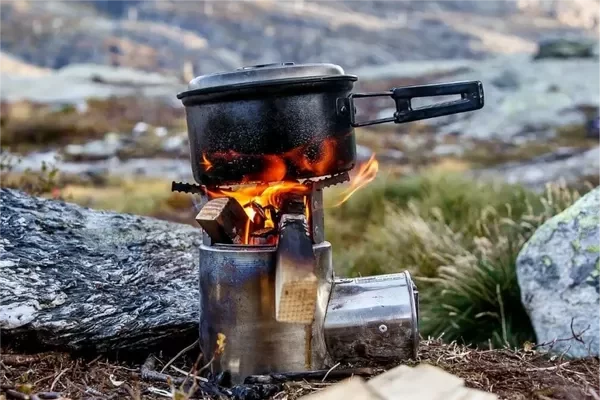Camping stoves are essential for cooking meals in the great outdoors. Choosing the right fuel is crucial for performance, safety, and convenience. In this article, we will explore the various types of gases available for camping stoves, their pros and cons, and how to select the best option for your needs.
Types of Gases for Camping Stoves
There are several types of gases commonly used in camping stoves. Each has unique properties, benefits, and drawbacks.
Propane
Overview: Propane is one of the most popular fuels for camping stoves. It is a byproduct of natural gas processing and petroleum refining.
Advantages:
- Availability: Propane is widely available and can be purchased in various sizes.
- Performance: It burns hot and efficiently, making it ideal for cooking.
- Versatility: Propane can be used in various weather conditions, including cold temperatures.
Disadvantages:
- Weight: Propane tanks can be heavy, especially for backpacking.
- Storage: Requires proper storage and handling to prevent leaks.
Butane
Overview: Butane is another popular gas for camping stoves. It is often found in canisters that fit specific stoves.
Advantages:
- Compactness: Butane canisters are small and lightweight, making them ideal for backpackers.
- Easy to Use: Canisters connect easily to stoves without complicated setups.
Disadvantages:
- Cold Weather Performance: Butane struggles in very low temperatures, often losing pressure.
- Availability: It may be less available in remote areas.
Isobutane
Overview: Isobutane is a variant of butane and is commonly used in hybrid fuel canisters.
Advantages:
- Cold Weather Performance: Isobutane performs better in colder temperatures compared to regular butane.
- Efficiency: It burns cleanly and efficiently, similar to propane.
Disadvantages:
- Cost: Isobutane canisters tend to be more expensive than regular butane canisters.
White Gas (Coleman Fuel)
Overview: White gas is a refined form of gasoline that is suitable for camping stoves.
Advantages:
- Performance in Cold Weather: White gas performs well in cold conditions.
- Refillable: You can refill your fuel bottles, reducing waste.
Disadvantages:
- Complexity: Requires a different type of stove, and setups can be more complicated.
- Odor: White gas can produce unpleasant fumes when burned.
Diesel and Kerosene
Overview: Diesel and kerosene are less common for camping stoves but can be used in specific multi-fuel stoves.
Advantages:
- Availability: Often available in remote locations.
- Cost-Effective: Generally cheaper than propane and butane.
Disadvantages:
- Performance: They may not burn as cleanly or efficiently as other fuels.
- Weight: Heavier than canister fuels, making them less ideal for backpacking.
Factors to Consider When Choosing Fuel
When selecting the best gas for your camping stove, several factors should be considered:
Cooking Needs
Determine what you will be cooking. If you need to boil water quickly, a fuel that burns hot is essential. If you plan to do more delicate cooking, consider how easy the fuel is to control.
Weather Conditions
Consider the climate where you will be camping. If you are in colder regions, propane or isobutane might be better choices. In milder weather, butane can be sufficient.
Weight and Portability
For backpackers, weight is crucial. Smaller canisters of butane or isobutane are ideal for reducing pack weight. Propane tanks, while efficient, can add significant weight.
Availability of Fuel
Before your trip, check the availability of fuel in the area. Some fuels might be hard to find in remote locations. Propane is typically easier to locate than butane.
Environmental Impact
Consider the environmental impact of your chosen fuel. Some fuels produce more emissions than others. If minimizing your carbon footprint is important, look for cleaner-burning options.
Budget
Prices for camping stove fuels can vary significantly. Compare costs, especially if you plan multiple camping trips. Bulk buying can sometimes save money.
Safety Considerations
When using gas for camping stoves, safety should always be a priority.
Proper Ventilation
Ensure your cooking area is well-ventilated. Burning gas produces carbon monoxide, which can be dangerous in enclosed spaces.
Leak Checks
Before using your stove, check for gas leaks. Use soapy water on connections; bubbles indicate leaks.
Storage and Handling
Store fuel canisters upright and away from heat sources. Follow manufacturer guidelines for storage and handling to prevent accidents.
Fire Safety
Always keep a fire extinguisher or a bucket of water nearby when cooking. Never leave a burning stove unattended.
Comparison of Gas Types
To help you make a decision, here’s a side-by-side comparison of the main gas types:
| Gas Type | Performance | Weight | Availability | Cost | Cold Weather Performance |
|---|---|---|---|---|---|
| Propane | High | Moderate | High | Moderate | Good |
| Butane | Moderate | Low | Moderate | Low | Poor |
| Isobutane | High | Low | Moderate | High | Better than Butane |
| White Gas | High | Low | Low | Moderate | Excellent |
| Diesel/Kerosene | Low | High | Moderate | Low | Moderate |
Conclusion
Choosing the best gas for camping stoves depends on various factors, including your cooking needs, the weather, and your camping style. Propane and isobutane are excellent choices for their efficiency and performance. Butane works well for lightweight backpacking, while white gas is ideal for colder conditions.
Remember to prioritize safety and environmental considerations when selecting your fuel. Always practice proper storage and handling to ensure a safe and enjoyable camping experience.
By understanding the advantages and disadvantages of each fuel type, you can make an informed choice that enhances your outdoor cooking experience. Happy camping!
Related topics:

